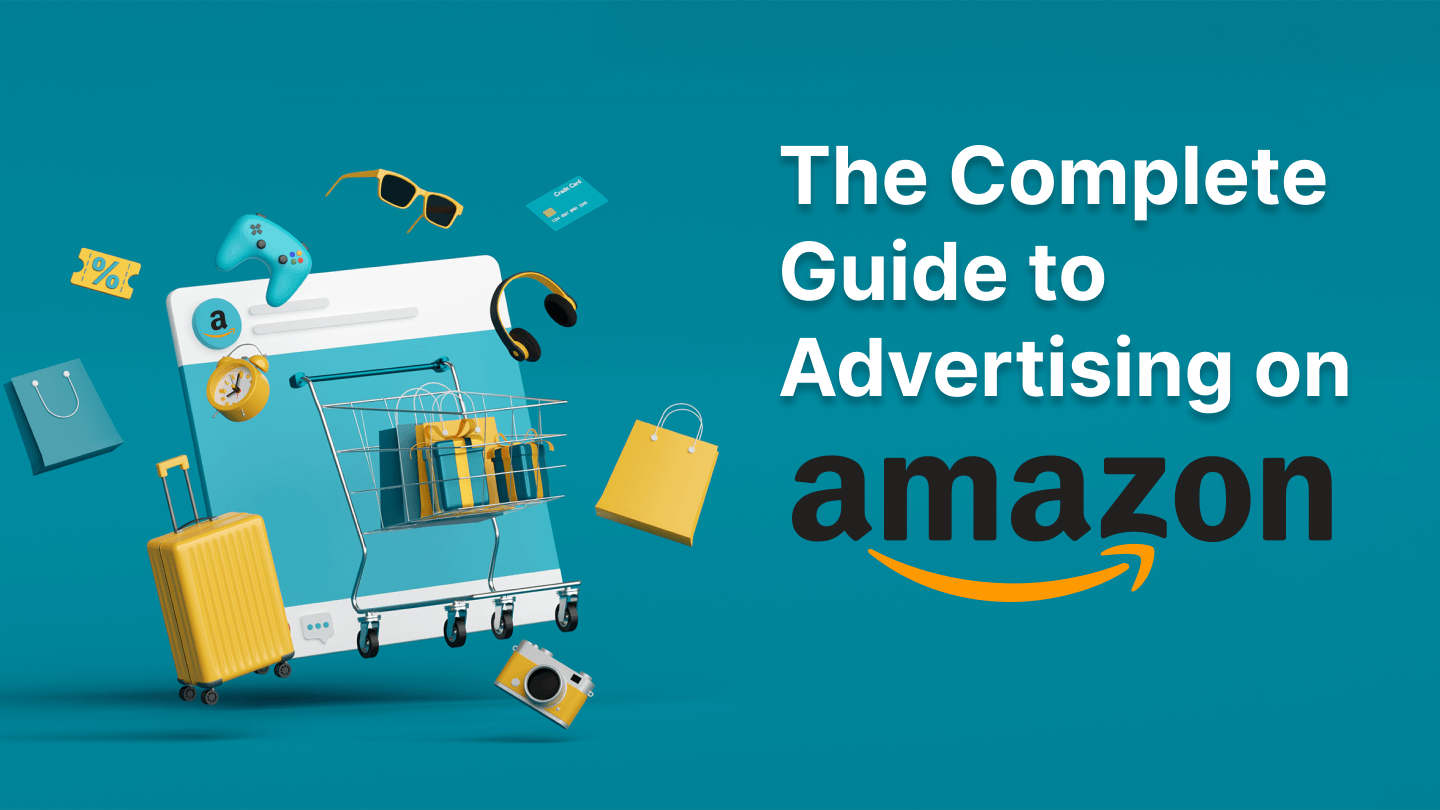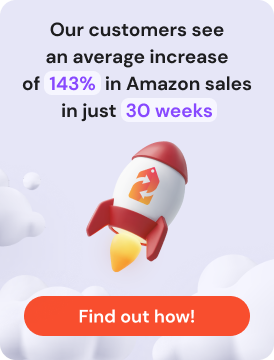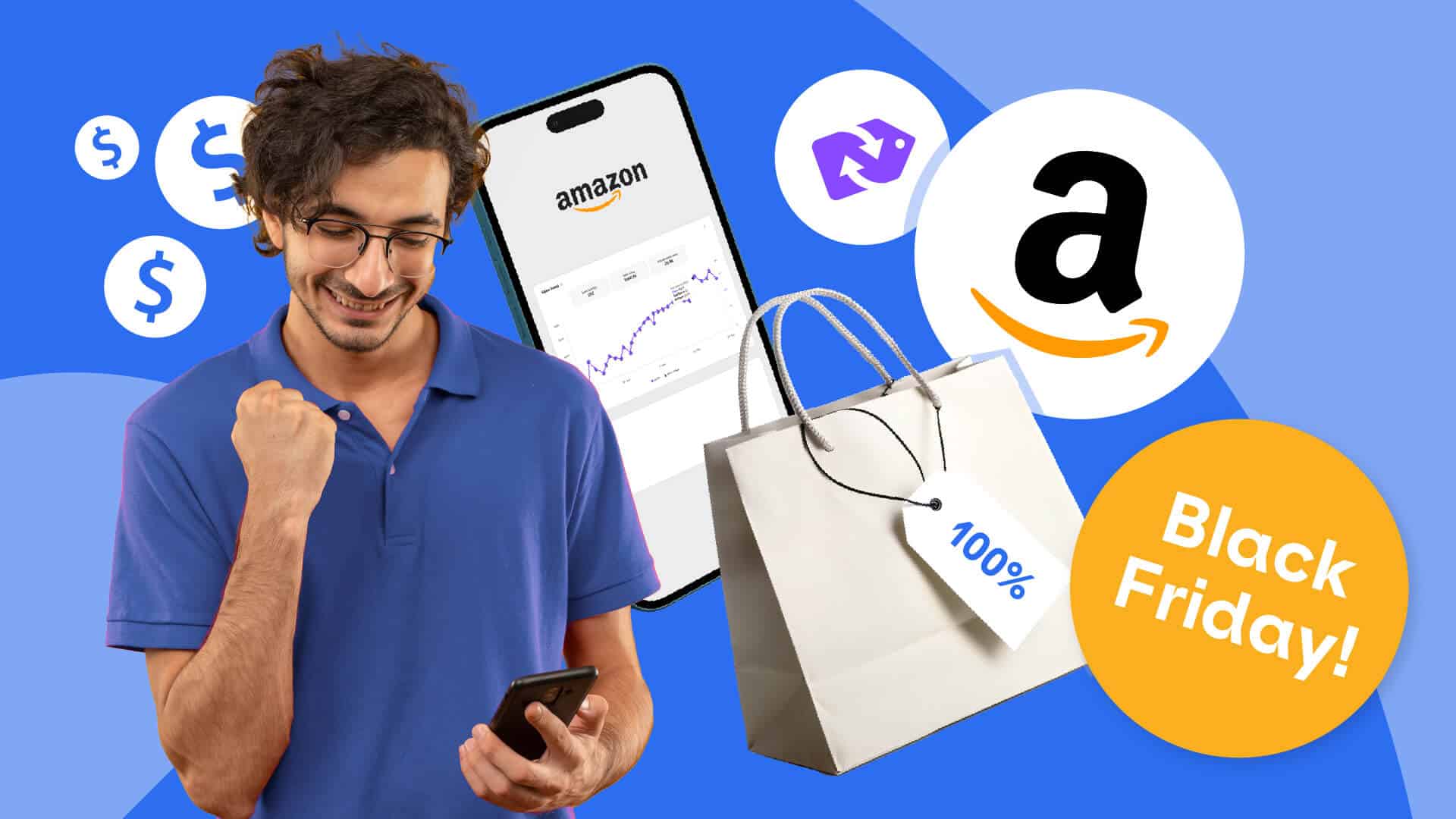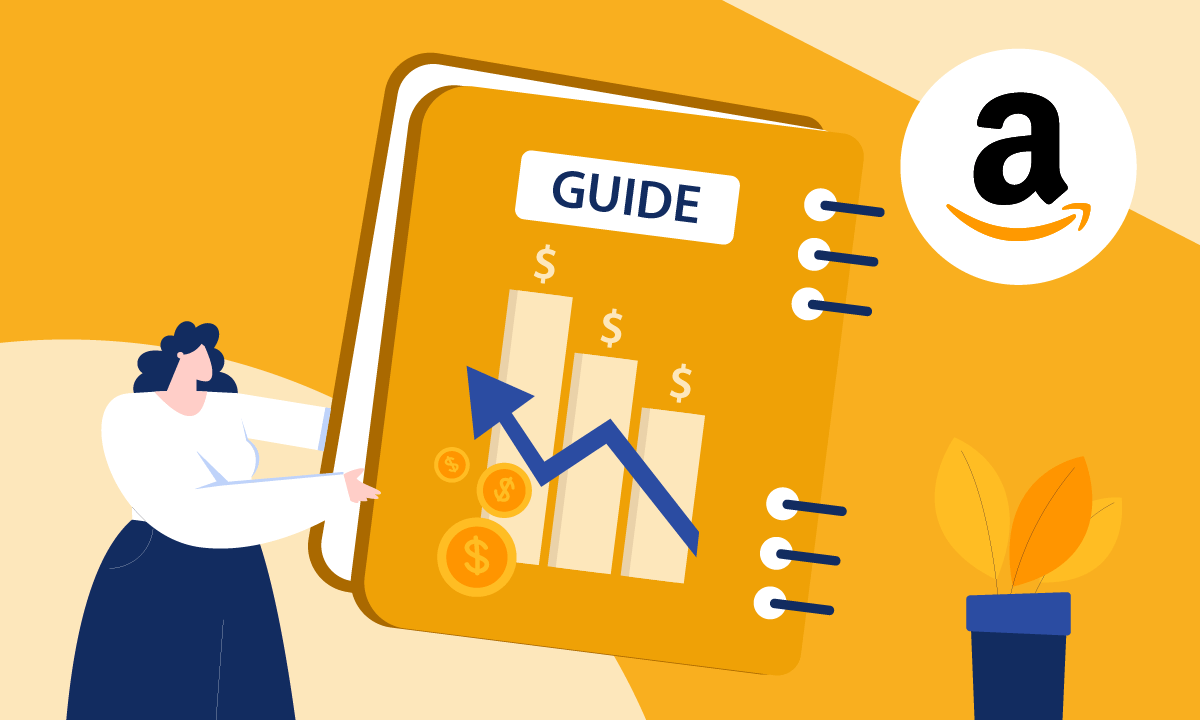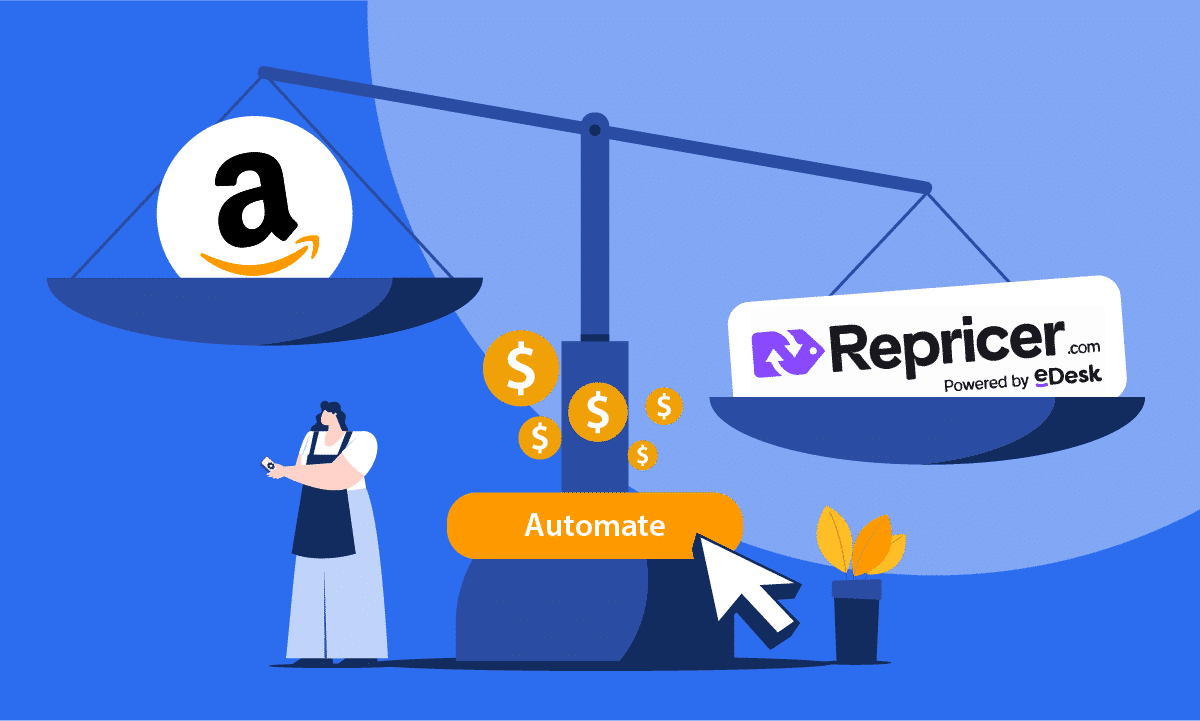Amazon has changed online selling entirely in recent years. While many businesses now enjoy huge success on the platform, it’s also more competitive than ever.
How can you give your products the edge? How do you stand out from sellers with similar products and get more sales?
There are many steps you can take, from creating optimized listings to using repricing software like Repricer to make your products more competitive and win the Buy Box.
Amazon advertising can also play an important role and could provide you with exactly what you need to succeed.
One of the great things about advertising on Amazon is that customers are ready to buy when they see your ads. When they’re searching on Amazon, it’s very different from when they’re searching on Google.
They’re often looking for something to purchase at that specific moment, and in general, they’re very much in the buying phase.
PPC advertising on Amazon has a lot of benefits for sellers and is a powerful advertising channel you can leverage.
So how should you get started and enjoy success with Amazon advertising?
In this guide, we’ll look at every aspect of advertising on Amazon to increase your knowledge and help you understand how to get started and maximize your advertising efforts.
After you finish reading, you should be ready to start your first advertising campaign on Amazon so you can find new customers for your products and take your business to the next level.
TL;DR
- Amazon advertising is an effective way to get more eyes on your products and boost the profitability of your business.
- PPC ads are the main types of ads available, and they include Sponsored Products, Sponsored Brands, and Sponsored Display ads.
- Make sure you know your objectives, whether that is to increase conversions or boost brand loyalty.
- Follow the steps laid out in this guide to create your first Sponsored Products ad campaign.
- Use these Amazon advertising tips to maximize your ad campaigns and increase profits.
Overview of Amazon Advertising
So, what exactly is Amazon advertising?
The main type of advertising on Amazon is PPC advertising, which stands for pay-per-click advertising.
Amazon’s advertising platform is simply called Amazon Advertising. Using PPC ads, you can target keywords and create ads for your products in a matter of minutes.
Once you’re running your ads, when people search using the keywords you’re targeting, your ads appear in the search results or in other competing product listings, depending on how you’re targeting your ads — more on that later.
As the name “pay-per-click” suggests, you only pay when a user clicks on one of your ads. You’ll pay whether a shopper purchases your product or not, but you will not pay based on how many people see your ad in the search results.
The good thing about this is that people clicking on your ad are warm targets. They’re probably looking for the product you’re offering. They may not be ready to buy, and they might just be researching, but there’s a good chance that they’re at least interested in what you’re selling.
Ads can help to make your product more visible to these warm targets and increase conversions compared to shoppers simply finding them in the search results.
So, is Amazon advertising worth it?
In general, it can be very worthwhile. Running Amazon PPC ads is one of the best ways to get more eyes on your products and take full advantage of the customer base on Amazon with high buyer intent.
The main problem is that it can be a bit intimidating at first. If you have no experience in advertising, you may be put off by all the ad types, the tools to use, and the terminology. You don’t want to waste money on ads that don’t perform, so you may put off experimenting with them.
But as you’ll see in this guide, there’s not a lot to it if you want to get started. While optimizing your ads is something that you can keep on doing, getting started is not too complicated.
Amazon PPC Advertising
Competition is tough on Amazon, and it’s growing all the time. Every year, more people start selling on the platform, and you need to ensure your products stand out and get noticed.
Amazon PPC ads are a great way to do this.
Why Use PPC Ads?
One of the reasons sellers use PPC ads is to advertise new products that still don’t have many sales or reviews.
In this case, you can use advertising to make your product more visible and get more reach. This will hopefully lead to more sales, which can then improve the product’s organic ranking.
As long as it’s a good product with an optimized listing and appealing images, you should be able to get clicks and sales using PPC advertising, which will then help to increase its organic rankings.
Alternatively, you may simply want to get more visibility for your products compared to what they receive in the standard search results. Even if your products are selling well, advertising them on Amazon can help to boost your sales even more, increasing your profits.
When you start using PPC ads, Amazon provides you with several metrics you can use to judge how well your ads are performing. You can use these to get a better understanding of your ads:
- Clicks—The number of times your ad is clicked.
- Impressions—The number of times your ad is displayed.
- Spend—Your costs for each campaign.
- Sales—The sales generated from the click.
- Advertising Cost of Sales (ACOS)—One measure of ad efficiency that looks at how much you spend compared to how much you earn.
- Return On Ad Spend (ROAS)—Another efficiency metric, which shows how much you receive in revenue compared to how much you spend on advertising.
It may take a while to learn all of these metrics, but understanding what they mean and how they can impact your actions will help you to optimize your campaigns over time.
Types of Ads on Amazon
Now that we’ve looked at the basics, there are several types of ads on Amazon that you should know about. Here, we’ll look at all of the ads so you can learn more about them and choose the most effective ad type (or types!) for your business.
Sponsored Products
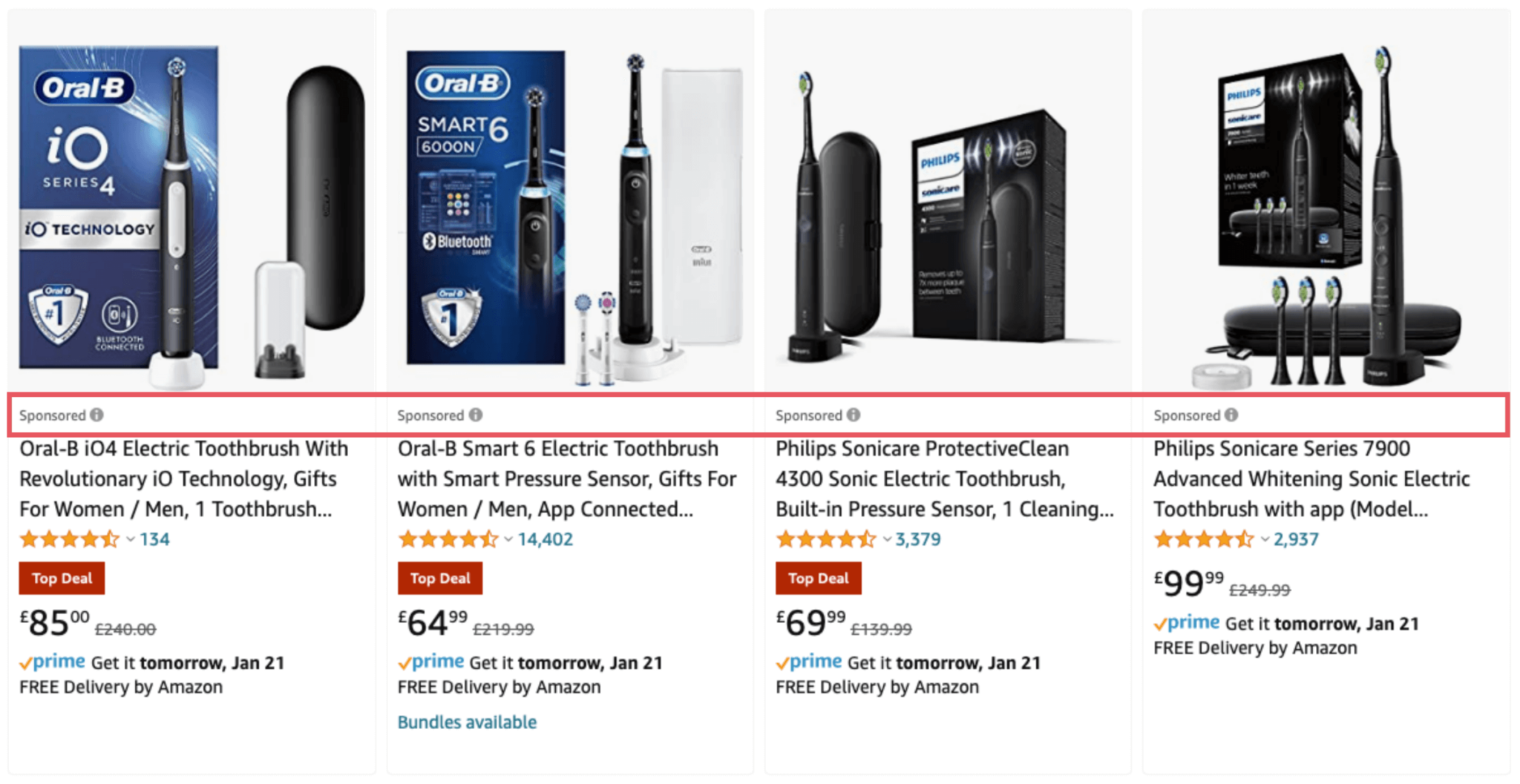
Sponsored Products ads are the most popular form of advertising on Amazon. These are also one of the most effective, especially if you’re just starting out.
These ads are what you probably picture first when you consider advertising on Amazon, and they’re the main ads that you’re likely to start with.
They’re PPC ads with a low cost that are relatively easy to understand and use.
You can use a Sponsored Products campaign to promote specific products that you want to sell more of. Essentially, a shopper will go to the search bar on Amazon and type in what they’re looking for. If they use keywords related to your product, your ads will then appear and be more visible than the products in the organic results.
Each Sponsored Product ad has a “Sponsored” tag, so people can see that they are ads. However, they still blend in quite well with the organic results.
The ads also match the intent, so shoppers see results that are relevant to what they’re looking for.
These ads usually appear at the top of the page above the fold, taking pride of place on the search results page. However, they don’t always appear at the top. They might appear alongside the results, within the results, or on product pages.
Sponsored Product ads are a great way to gain visibility for your products. It’s easy to control your costs, and it’s also easy to measure the success of your ads.
The ads are straightforward, uncomplicated, and quick to launch. Once you have carried out your keyword research, you could launch a campaign in minutes. This makes them a popular choice for sellers new to advertising.
There’s also no need to be brand-registered to use this option, so it has good availability.
With Sponsored Products ads, you can choose from two types of targeting: Automatic and Manual.
With automatic-targeting ads, Amazon decides which keywords to target. This is based on the product you’re selling, and it’s a good way to get started because it’s quick and easy.
You can see the keywords that Amazon finds and quickly see whether they’re converting. However, there are fewer optimization options.
With manual-targeting ads, you decide which keywords you want to target and set custom bids. You can also choose broad match, exact match, or phrase match, which we’ll look at later.
With manual-targeting campaigns, you can also choose between keyword and product targeting.
With keyword targeting, you can choose the keywords you want to target. With product targeting, you target your competitors’ listings instead. By specifying their ASINs, you can get your ads to appear on their listings. You can run both at the same time, but you must set them up separately.
Although there’s no need to be brand-registered to use these ads, you must have a professional Amazon seller account instead of an individual seller account. Alternatively, you must be a Vendor. Your product must also be Buy Box eligible.
You must also set a budget of $1 a day or more. But it’s probably best to start with more. You can start with $10 a day or so and then increase this as you get the hang of it.
Sponsored Brands
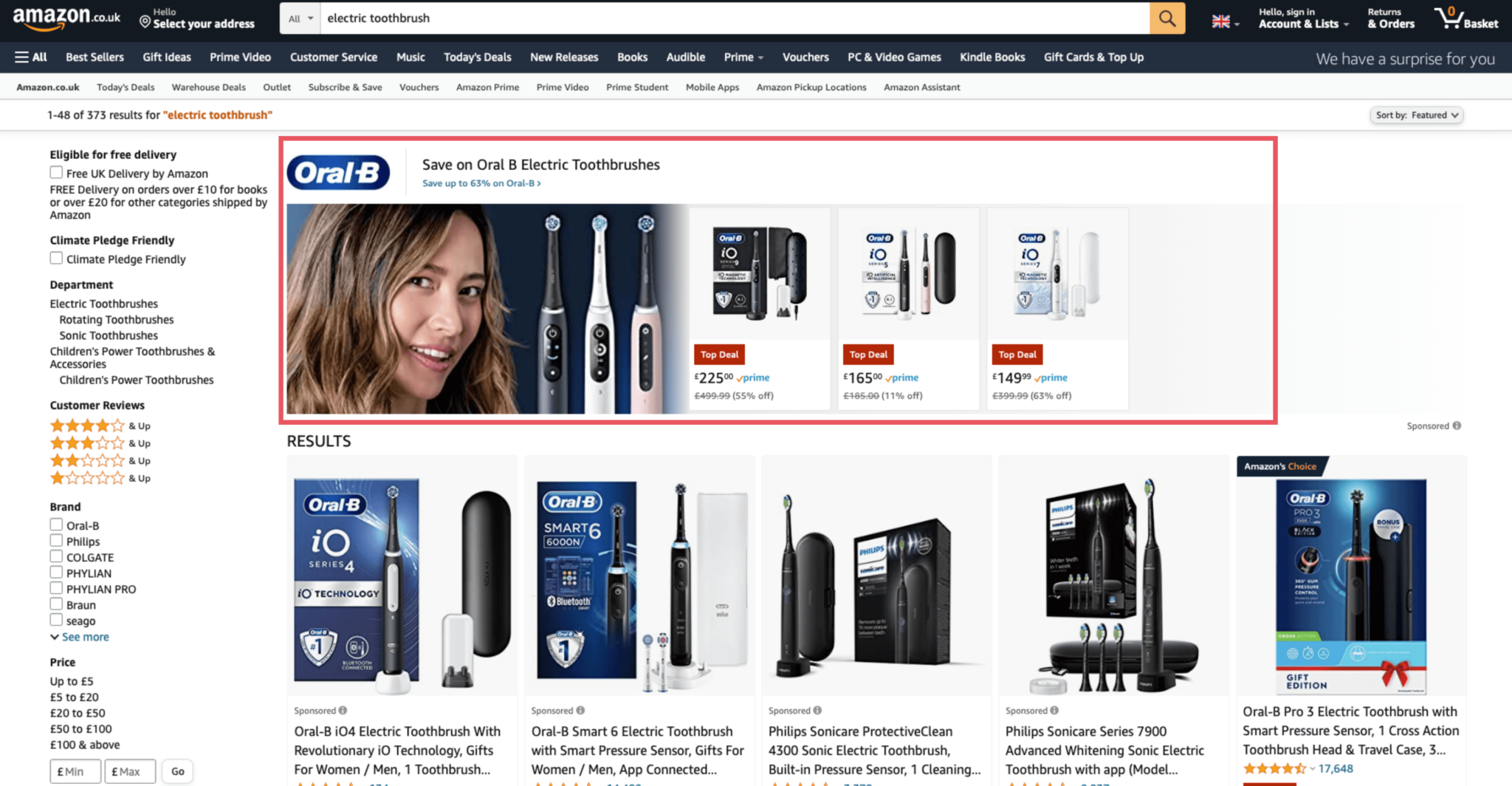
The second type of PPC ad you can use is a Sponsored Brands ad. Sponsored Brands ads appear on product pages and on shopping results at the top and bottom as well as within the results.
These used to be called Headline Search Ads, so you may see them called this. Sponsored Brand campaigns are targeted at top-of-the-funnel customers – meaning those who are just starting their search.
These ads feature a headline, a logo, and a small selection of products, rather than targeting a specific product like the Sponsored Products ads.
When shoppers click on these ads, you can direct them to one of the products in the ad or to your Amazon Store or landing page.
You can use Sponsored Brands campaigns to advertise up to three products, providing customers with a broad view of what you offer.
Your store is focused entirely on your brand, without any ads or listings from competitors, so the shopper only sees your products.
Why use these ads? The main purpose is to build brand awareness by presenting your brand to customers using a custom headline.
These ads are a great way to get more visibility and increase sales by connecting customers with your store or products and providing them with a branded experience.
These are more advanced and are only available for sellers in the Brand Registry program, so you have to enroll in this first.
There are three formats to choose from with Sponsored Brand ads:
- Product Collection
- Store Spotlight
- Video
Product Collection is the main type of ad to choose. With this ad, you can feature up to three products and direct traffic to your products or to your Amazon Store or a landing page.
A Sponsored Brands campaign using this format is a good way to get more attention for your newer products or products with lower rankings by advertising them next to your most popular products.
The Store Spotlight format can only be used if you have an Amazon Store. With this option, you direct traffic to your store.
Amazon Stores are like custom websites but on Amazon. They can be very effective if you sell lots of products in multiple categories. You can use these ads to promote three categories instead of just three products and send traffic to your subpages for those categories.
Video ads automatically play to customers. These are eye-catching and stand out from other ads and product listings.
Keep them short (which means no more than 30 seconds) and make them informative. A good video ad should be focused entirely on the product with no unnecessary information.
Video ads autoplay with no audio, so make sure your ads use captions to provide viewers with all the information they need without having to turn the sound on.
You must follow Amazon’s guidelines, or your video could be rejected. You may want to get a professional video made to make your ads stand out more.
With Sponsored Brands ads, you can use keyword targeting or product targeting, just like with Sponsored Products ads.
These are only for Vendors or brand-registered sellers. If you have competitors who are not enrolled, they can’t compete with your ads, which could help to give your products the edge over theirs.
Sponsored Display
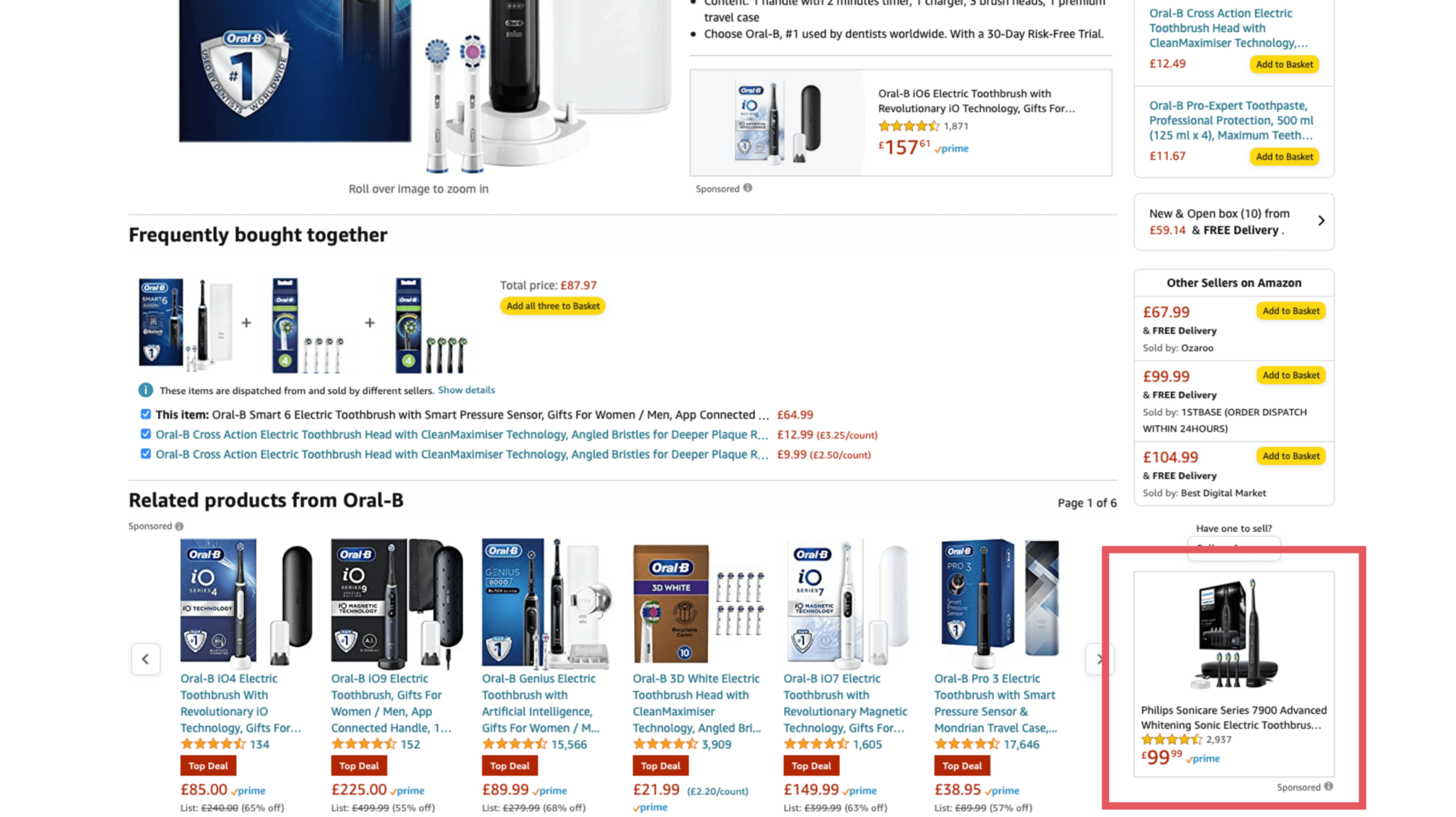
Sponsored Display ads are a more recent addition to the advertising options on Amazon. They were originally being trialed in the United States, but now they’re available in more countries.
With this ad type, you don’t target potential customers using keywords or competitor products. Instead, ads are targeted to customers based on their interests and behaviors. The idea is to target people who have shown an interest in categories that are related to your product.
Alternatively, you can re-engage with people who have viewed your product detail page but haven’t purchased your product so far.
These ads show both on the Amazon website and on third-party sites, so you can reach customers outside Amazon too.
The ads are generated automatically to target specific audiences based on their shopping behavior. They show up on product detail pages or target people based on their viewing history or interests elsewhere.
You can use these ads to get attention from customers who are interested in your competitors, and they’re a good way to increase your presence on third-party sites and apps.
Just like Sponsored Brands ads, Sponsored Display ads are only for Vendors or Sellers who are enrolled in Amazon Brand Registry.
They provide you with an effective way to remind customers about your product and brand, even when they’re using a different website.
You have three targeting options with Sponsored Display ads: Product Targeting, Views Remarketing, and Audience Interests.
With Product Targeting, you target customers browsing your products, your competitors’ products, or categories that are related to yours. You can place an ad on a competitor’s listing if you want to.
Views Remarketing provides you with a way to retarget customers who have viewed your listings in the past. You can give them a reminder about your listings and encourage them to return.
These are warm targets instead of cold, and your ads can be displayed on Amazon and on third-party sites to people who have viewed your product in the last 30 days but have not yet made a purchase.
With Audience Interests, you can target customers to boost brand awareness by displaying your ads to customers who are interested in similar products.
Like the other ad types, you set a daily budget, and minimum spending requirements apply. Start with a small budget and increase it over time to optimize ads that perform well.
Other Advertising Options
If you’re enrolled in Brand Registry, you also have access to several other advertising options, including Amazon Live, Amazon Attribution, and both video and audio ads.
Amazon Live
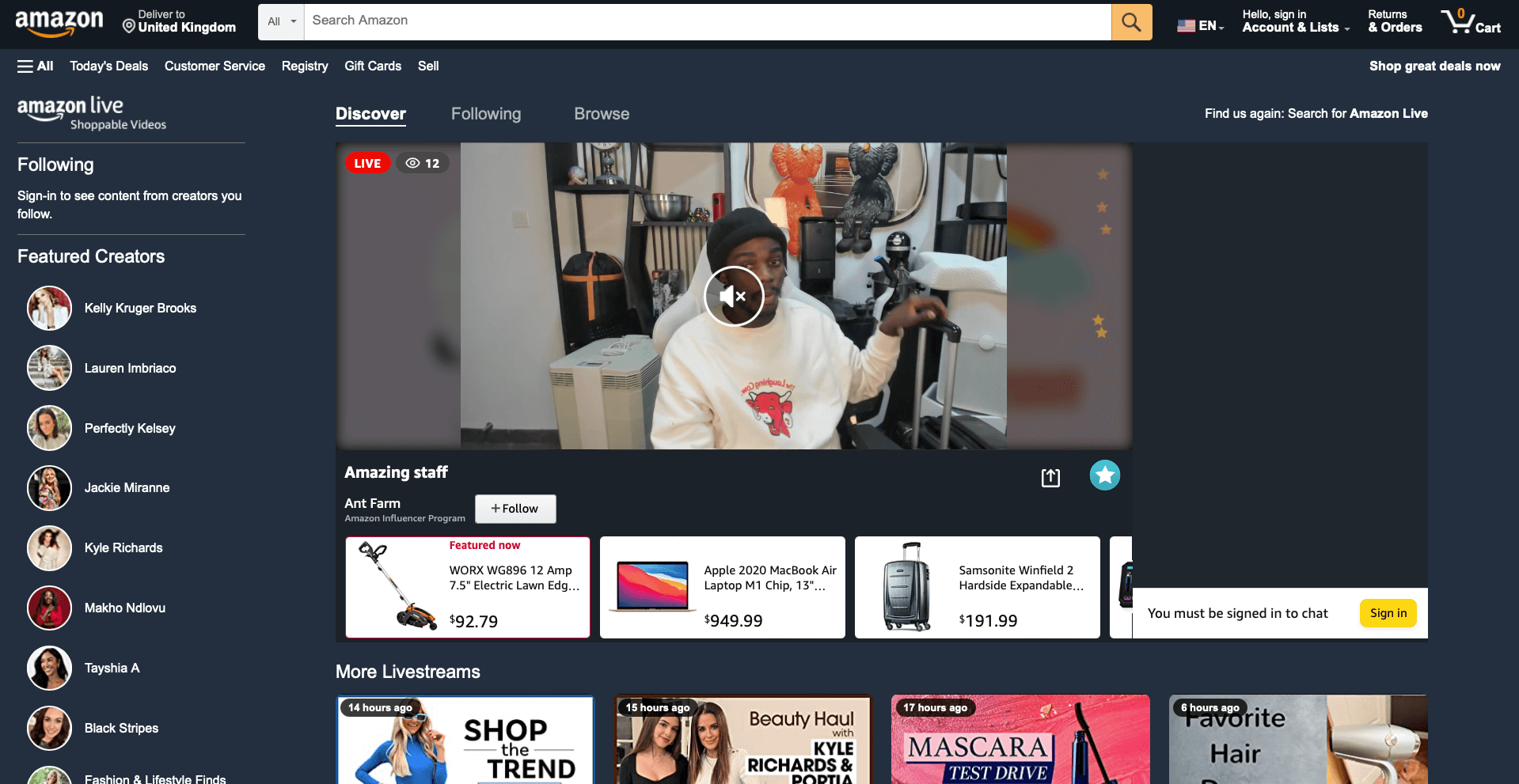
This is another option for advertising on Amazon, where you can stream live and speak directly to your potential customers. During your live stream, you can run promotions that are only available for your live viewers.
This type of advertising is a good way to build brand awareness and showcase products while increasing engagement with customers. You can notify your customers when you’re starting your live stream, and you can go live when you want to boost engagement.
Amazon Attribution
This free advertising tool is available for brand-registered sellers, and you can use it to measure your marketing efforts on third-party sites.
It’s a useful tool if you advertise on Facebook or Google, where you can get analytics and insights into how your marketing channels are performing.
There’s no point in running ads on other platforms if you can’t see how effective they are when it comes to generating sales on Amazon. Using Amazon Attribution, you can find out how your ads have boosted sales on Amazon so you can understand how they are performing.
Audio Ads
Many people now own Alexa devices like the Echo or listen to Amazon Music, and you can create audio ads for your Amazon brand to reach them. This way, you can reach consumers with audio ads when they can’t watch a screen.
Audio ads are short, about 10 to 30 seconds in length, and you can use them to promote your brand or individual products. However, these ads are only suitable for businesses that have large marketing budgets.
Video Ads
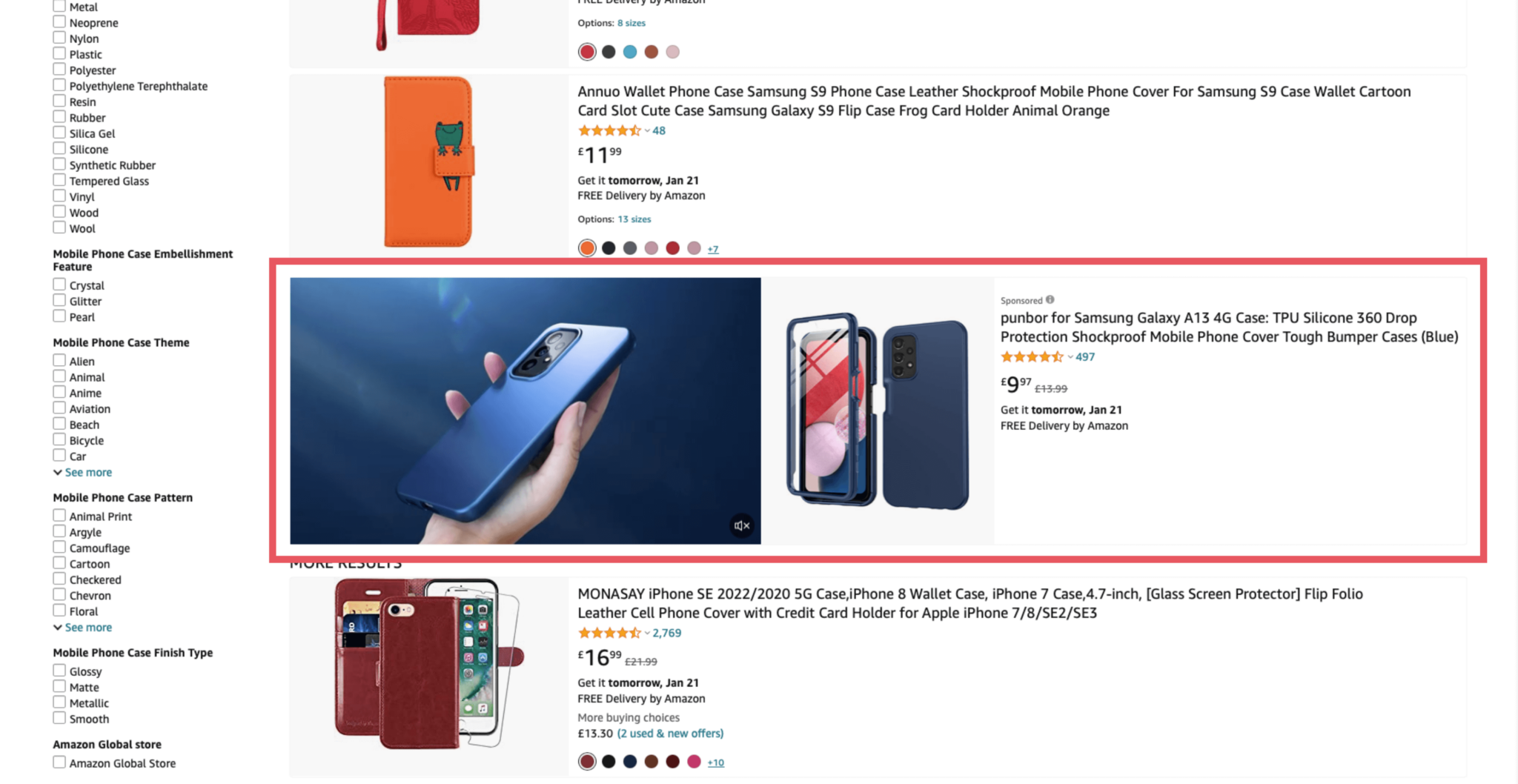
You can also use online videos to promote products on Amazon or other websites. These videos are combined with copy and a clickable link to your product or to your store.
You can use them in streams or on Amazon in place of display ads, and they can also appear on the Fire tablet. They’re an effective way to communicate brand value and your brand story, and you can use them for a specific product.
Custom Ads
Custom Ads are only for large businesses. They are designed by Amazon’s own team and provide new ways to reach customers and get your brand to stand out more.
Amazon Ad Tools
When it comes to creating your ads, you need to use the tools provided by Amazon: Amazon Advertising Console and Amazon Demand Side Platform (DSV).
Amazon Advertising Console
Amazon Advertising Console is the tool you’ll normally use when you start out running sponsored ads. It’s available for both Sellers and Vendors, and you can use it to create Sponsored Products, Sponsored Brands, and Sponsored Display ads.
Amazon DSP
Amazon DSP is a tool provided by Amazon to create display and video ads that you can run on Amazon and third-party websites. Using this, you can create ads that incorporate coupons and reviews.
Setting Your Objectives
Before you create your ad campaign, you need to start out by setting your objectives. This can be tricky when you’re first starting out, but there are a few key objectives to choose from.
Increase Conversions
If getting more conversions is your goal, you can choose this as your objective. This will help you to drive sales. Increasing conversions is the most common choice for sellers new to advertising, and Sponsored Product ads are the most popular way to achieve this.
Brand Awareness
You might also have a goal to increase brand awareness, so consumers become more familiar with your brand.
You could use Sponsored Brands ads and Sponsored Display Ads for this. You can measure brand awareness by using impressions, which is the number of times your ads are shown to shoppers. You can also measure the total first-time customers and total first-time sales.
Boost Brand Loyalty
You may want to focus on getting more customers back by targeting existing customers to make repeat purchases and referrals. If this is your option, you can create an Amazon Store and use Sponsored Brands ads to direct customers back to your store.
How to Measure Campaign Efficiency
Another factor to consider when you’re deciding on your objectives is how to measure the efficiency of your advertising campaigns.
There are two main ways to do this on Amazon: Advertising Cost of Sales (ACOS) and Return on Advertising Spend (ROAS).
- ACOS – This shows you how Amazon Sponsored Products ads are performing, and it’s the total ad spend divided by the total sales. You want this to be low.
- ROAS – This shows how much revenue you make for every dollar you spend on advertising. It’s the total sales divided by ad spending. With ROAS, the higher, the better.
Creating an Advertising Campaign
You now have a good idea of the types of ads and the objectives you can focus on. If you’re new to Amazon advertising, you’ll probably start with Sponsored Products ads. Here, we’ll look at the key steps to create your first campaign.
Step 1: Create an Amazon Ads Account
The first thing to do is create an account. You’ll need to have a Seller Central or Vendor Central account first. Once you have this, you can create your Amazon Ads account and get started.
When you have created an account, log into the Amazon Advertising Console and follow the instructions to get set up.
Step 2: Create Your Campaign
In the Amazon Advertising Console, create your first campaign and choose Sponsored Products.
Give it a name and set the duration. Will it run for a set time or continually? For a seasonal campaign, it’s best to set it up for a specific time period. Otherwise, set it to run continually. Remember that you can always pause the campaign at any time.
Step 3: Set a Budget
Similar to advertising on other platforms like Google, you’ll need to choose your budget and then select how you want to bid for positions.
With Sponsored Products, you need to set a daily budget. This is the maximum you want to spend on ads for your product on average each day over the course of a month.
Your minimum budget must start at $1. However, that’s quite low, and you’ll probably want to set a higher budget. A $5 daily budget means you’re willing to spend $150 a month.
With Sponsored Brands, you can set a lifetime budget. This is the total you want to spend overall, and it must be $100 or more.
Step 4: Create an Ad Group
Create an Ad Group for your campaign. This is where you choose the products to promote, and it consists of a group of ads with the same keywords and products. Group products in the same category and roughly the same price.
Create a name for the Ad Group, then search for products to include and add their ASINs.
Step 5: Set Automatic or Manual Targeting
Targeting your ads is the next important area. This is crucial to get right if you want to ensure your ads reach the right audience.
Automatic Targeting
Automatic targeting is only available for Sponsored Product ads. This is a great way to start out if you’re new to advertising on Amazon.
It’s easy to get started because Amazon will match your product with relevant keywords, which are the terms people use to find your product.
It’s quick to get started, and you don’t need to worry about the details. But you can easily track progress and make changes to your targeting.
Choose from several types of targeting options with automatic targeting:
- Close Match, where your ad appears when people use search terms that are closely related.
- Loose Match, where search terms are more loosely related.
- Substitutes, where people view product detail pages of similar products.
- Complements, where people view product detail pages of products that complement yours instead of being similar.
Manual Targeting
Manual targeting is more advanced, but it also gives you more control. You may want to progress to this after first experimenting with automatic targeting.
This is a good option if you know exactly who you want to target and the customers you want to reach. You should also have a good idea of the keywords they use to find your products.
You can choose your own keywords or use Amazon’s suggested keywords. You can also target ASINs or categories if you prefer.
This option gives you more control over your ad spending, and you can make higher bids for specific keywords, categories, or ASINs that have already performed well. You can also set bids at the keyword level to bid more competitively on specific terms where you want to focus your efforts.
With manual targeting, you can target keywords in three ways:
- Exact—Search term matches your keyword exactly in the same order with no additional words.
- Phrase—Search term matches your keyword phrase in the same order, but words can come before or after the phrase.
- Broad—Must contain all the words in your keyword phrase, but it can be in any order with additional words included.
You can also include Negative Keywords. These are search terms you do not want your ad to show up for. These can also be exact, phrase, or broad match types.
Product Targeting
You can also target individual products or product categories. For individual products, targeting is quite straightforward because your ad appears when someone searches for that specific product.
With product categories, Amazon will display your ads to customers browsing in relevant categories. You can refine this in many ways, including by brand, star ratings, price, Prime Shipping Eligibility, and more.
Start by picking a category and then use Refine to narrow it down, so your ad doesn’t show up for an irrelevant search.
This depends on the goal of your campaign. If you’re focusing on building awareness, less refinement is needed. If you want to make sales on specific products, refinement is more important.
There’s also the option for Negative Product Targeting. Just like negative keywords, this enables you to clarify which products you don’t want your ads appearing on.
Step 6: Decide on a Bidding Strategy
For Sponsored Products ad campaigns, you can select a bidding strategy for your ads.
Dynamic Bids can be Down Only, where Amazon decreases your bid when it thinks your ad is less likely to convert.
They can also be Up and Down, where Amazon could increase your bid if it thinks it will convert to a sale or decrease it if a conversion is less likely.
Fixed Bids are, as the name suggests, where Amazon uses the exact bid you state all the time. This typically leads to more impressions but fewer conversions.
Step 7: Launch
When all that is done, you’re ready to go. If everything is in place, launch your campaign and start advertising on Amazon. In a few days or weeks, you can start to look at the data and decide what’s working and what needs changing, and then you can continue to optimize your campaigns to maximize results.
Amazon Advertising Tips
We’ve covered the most important factors to know about Amazon ads to get started. But there are several Amazon advertising tips you can follow to get more out of your campaigns.
Optimize Ad Copy
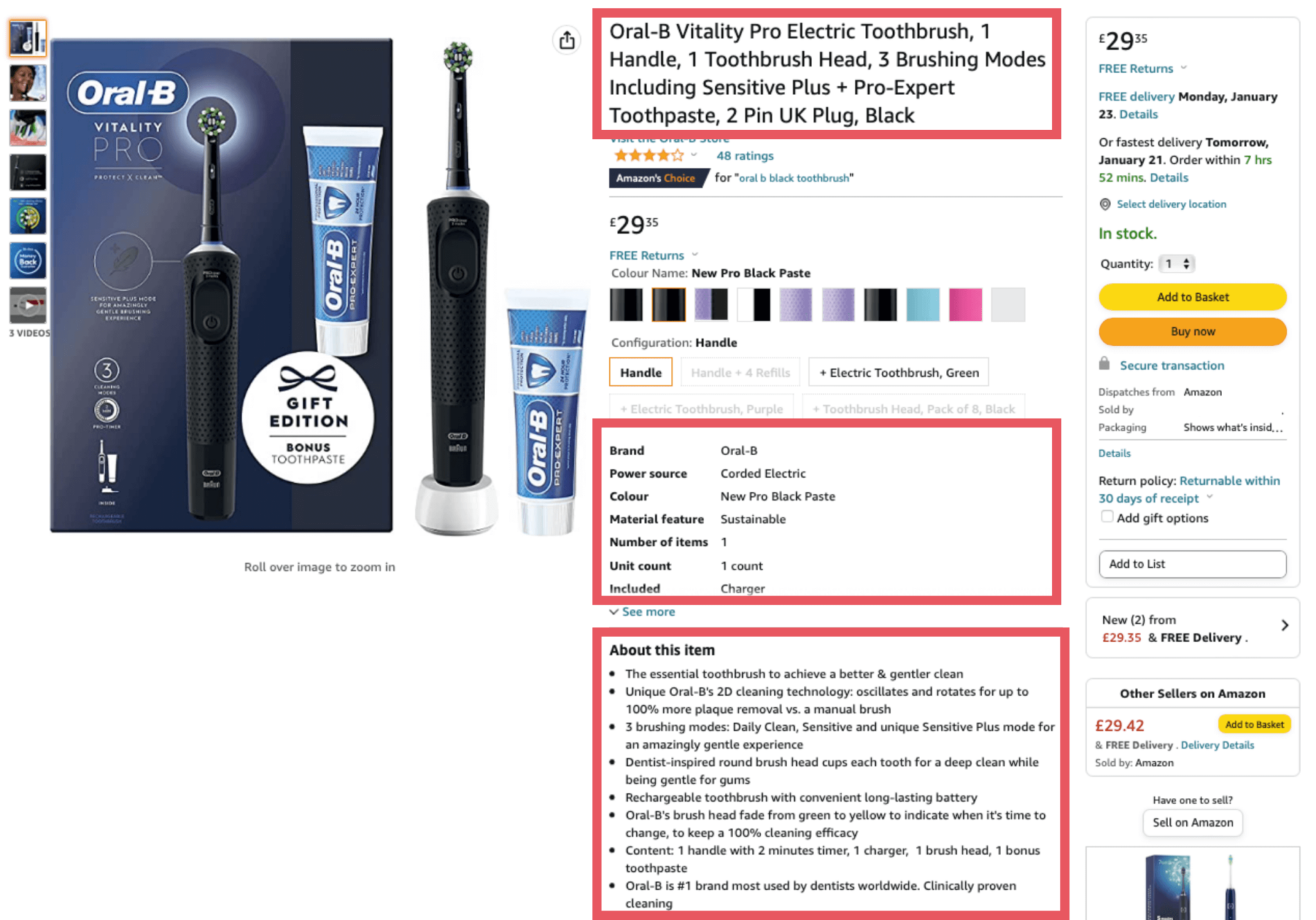
You need your ads to stand out in a competitive environment. So, just as you optimize your listings, optimize your copy too.
If you’re using Sponsored Brands ads or running Sponsored Display campaigns, your ad copy should be unique and original. Use copywriting tactics like urgency and include discounts to create FOMO and get more clicks.
Organize Your Campaigns
You’ll probably find everything chaotic when you first start, and it’s a lot easier if you keep everything organized.
Structure your ad campaigns so you know exactly which keywords are performing. Keep a clear view of what’s happening, and you’ll be able to tell when something is working and not so you can change your tactics accordingly and avoid wasting money.
Choose ASIN’s Carefully
It’s important to choose the best ASINs (Amazon Standard Identification Numbers) when you start advertising on Amazon.
These could be your best sellers. You know they are popular already, so advertising is a way to give them more exposure.
But if you’re focused on building brand awareness, you may want to choose your new products instead. Using advertising, you can get products with low sales numbers in front of more potential customers.
It’s also important to ensure the ASINs you promote are fully optimized, contain all the information required, and look attractive.
Run Automatic and Manual Campaigns
It can be tricky when you first get started. Which keywords should you target? How much should you spend on them?
When you’re running Sponsored Products ads, start by using automatic targeting. Run this for a few weeks and see how it performs.
Then create a new campaign using manual targeting. Get the information from your Advertising Console from the automatic campaign and identify the keywords getting the best results. Then use these keywords and enjoy greater flexibility and control over your campaign.
Use Third-Party Tools
There are several tools that can help you to automate your campaigns more. You can obviously choose manual or automatic options in Amazon, but you could also use third-party tools to do more of the hard work for you.
Tools like Semrush, for example, can automate your ad management and help with keyword research so you can generate better results.
Semrush learns from your sales and optimizes your campaigns to put your advertising budget to better use while saving a lot of time on keyword research.
Start Advertising on Amazon
This guide provides everything you need to know to get started with advertising on Amazon.
Not every Amazon seller uses advertising, and it’s not essential. You may well find that you can build your business without advertising. But you should at least experiment with it and explore your options.
You can get started advertising on Amazon without a large budget, and you can set up your first campaign quickly by following the steps in this guide.
Use Sponsored Products ads to start with, and you can set up an automated campaign and have your ads up and running in minutes.
See how it goes on a small budget, and then increase your budget over time. Explore your options more, try out different ad types, and work out what’s working for your products.
Once you have been running your campaign for a few weeks, start to optimize it over the weeks and months. Try new things, focus on the keywords that are generating the best results, and improve the efficiency of your ads.
You may even want to hire an Amazon VA. Someone with specialist skills in Amazon advertising can help you get started or take your existing ad campaign and optimize it further.
Amazon advertising is a great way to increase sales or generate more brand awareness on Amazon. It can help you succeed on the platform, take your business to the next level, grow sales, and increase profits. So try it yourself and see how you can use advertising to grow your Amazon business.
